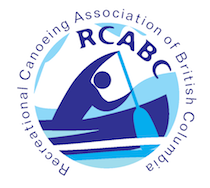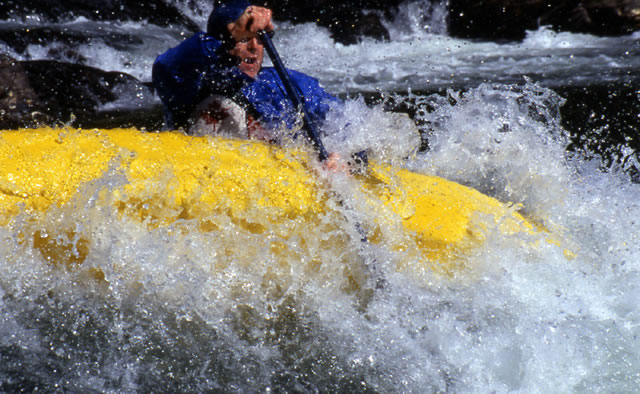Courses - Summary

River Rescue
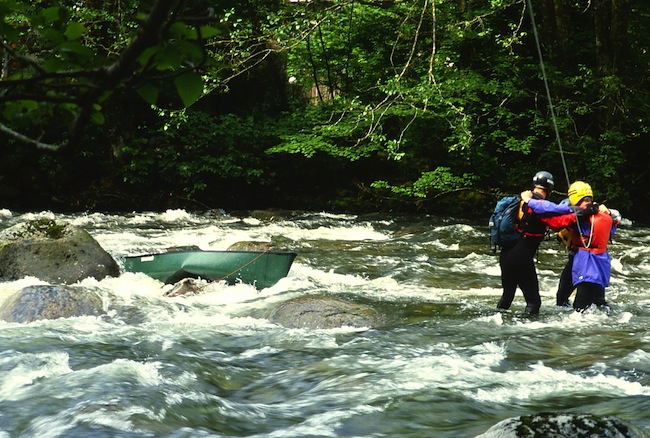
River canoeing is a wet sport! Sometimes very wet, like when you find yourself bobbing down a rapid beside your capsized canoe. More hazardous situations can occur too, although rarely if precautions are followed. The RCABC River Rescue Program is designed by canoeists for canoeists to develop skills to handle difficult situations. Too often paddlers rely on the most experienced rescuer in the group and don't get an opportunity to develop their own skills. The River Rescue Program encourages all river canoesits to be skilled participants and rescue leaders.
Ocean Canoeing
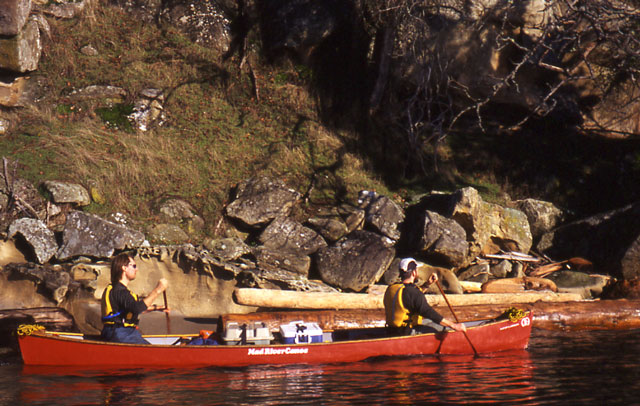
Canoeing on the ocean has a rich history in BC, starting with First Nations use of dugout canoes and the more recent use of modern tripping canoes. Both sheltered and open, exposed waters can be navigated by canoe if people have appropriate skills. Amazingly, people have circumnavigated Vancouver Island and even longer, more exposed journeys in canoes. Most people stick to the common trips such as the Broken Islands, Gulf Islands, Sechelt Inlet. With over 25,000 km of coastline, BC is the place to start exploring the ocean environment!
Big Canoes
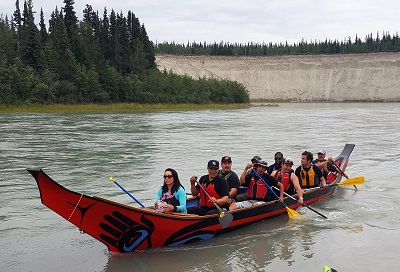
Big canoes are integral to the history and culture of First Nations, the Fur Trade and now, modern canoeing. They range from 22 to 40 feet and can carry up to 18 people. Big canoes are tremendously versatile and can be used on lakes, ocean and can even run rapids on rivers. For millenia, Big Canoes were Canada's transportation, using our extensive waterways as highways. They were originally designed by First Nations out of birch bark with wooden frame or dugout logs for carrying large loads and moving larger numbers of people.
C1 (Closed Canoe)
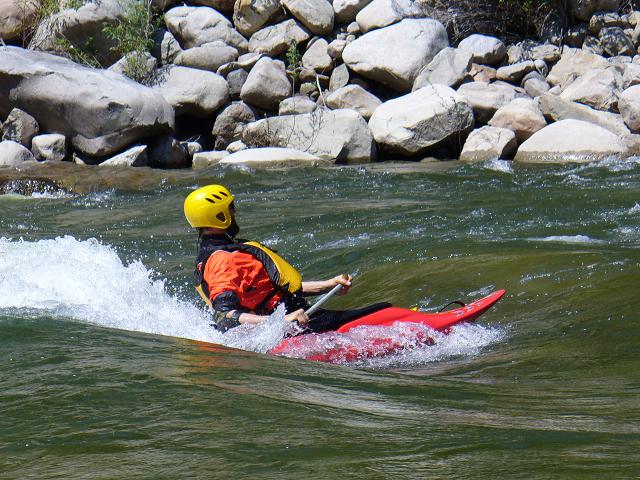
Closed canoes, or C-1s are fun and dynamic playboats or river running canoes which at first glance look like a whitewater kayak. The hull is similar or exactly the same as a kayak but that's where the similarity ends. In a C1, the canoeist kneels in custom outfitting with a higher center of gravity. The second difference of course is the use of a single bladed canoe paddle and the large variety of strokes used, many based on traditional canoeing strokes.
Stand Up Paddling
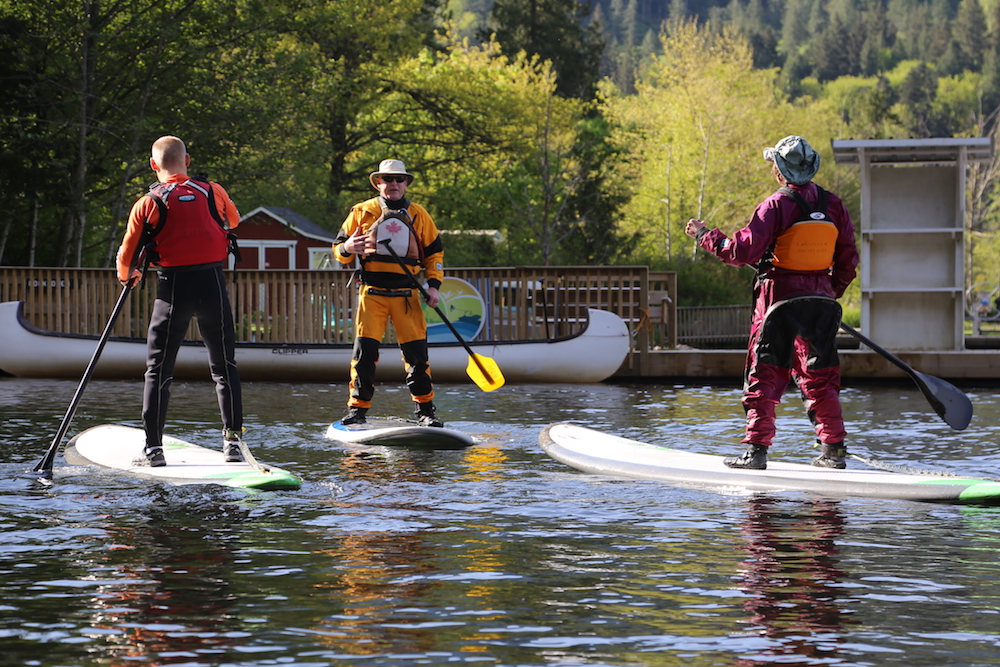
The sport of Stand Up Paddling has enjoyed spectacular success. There are more and more SUP paddlers joining this sport as it is a unique, fun and easy way to get out on the water and get a good work out. Stand up paddling partly evolved out of canoeing and has expanded to include river, surf, race, marathon and more. There are so many similarities between SUP and canoe that it was simple for RCABC to create the SUP Lakewater program with courses and certification ranging from beginner to advanced instructor.
Canoe Poling
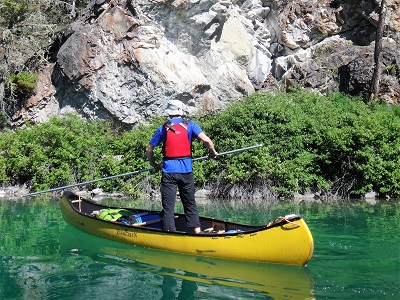
Before paddles were created, canoes were propelled and manoeuvred by poling, and the art of poling is still alive today. Poling is a remarkably versatile way to canoe on lakes, river and even whitewater. Standing in the canoe gives you dexterity and an excellent view, plus it adds to your comfort if you want to change positions. The long wooden pole gives the canoeist opportunity to manoeuvre the canoe with strokes off the bottom of the waterway or on the surface when needed, similar to using a paddle. Poling is an ideal way to explore shallow waterways and to move a canoe upstream on shallow rivers. BC is lucky to have a number of canoe poling instructors in various regions of the province.
Canoe Tripping

For many, going on wilderness trips is the ultimate way to enjoy canoeing. It could be a weekend family getaway, or a remote, multi-week river expedition. The canoe is unparalleled in its ability to handle the variety of challenges that tripping demands such as large carrying capacity, versatility in numbers of canoeists, excellent manoeuvreability, running rapids, open water crossings, ease of rescue and more.
UPDATED! Lakewater
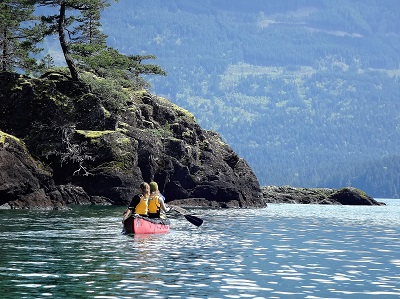
The RCABC Lakewater Program introduces and develops fundamental canoeing skills and is the foundation for river paddling, tripping and all other types of canoeing. The program includes courses which range from learning basic and advanced skills to leader and instructor level training. If your goal is any of the following:
- going on your first canoe camping trip
- leading kids and youth in outdoor pursuits
- canoe instruction or guiding
- to build the skills to go on a wilderness whitewater expedition....
Then the RCABC Lakewater Program is the place to start.
Moving Water

Canoeing on rivers is a fun and challenging sport. Skilled paddlers in an appropriately outfitted canoe can take on surprisingly difficult whitewater. River canoeing can be quite diverse, ranging from gentle floats to intense solo playboating in short modern canoes to multi-day trips carrying 300lbs of gear on remote whitewater rivers. There are RCABC programs for all of these styles of river canoeing.
Also see RCABC's River Rescue Program and Advanced Moving Water Program.
Guide Certification
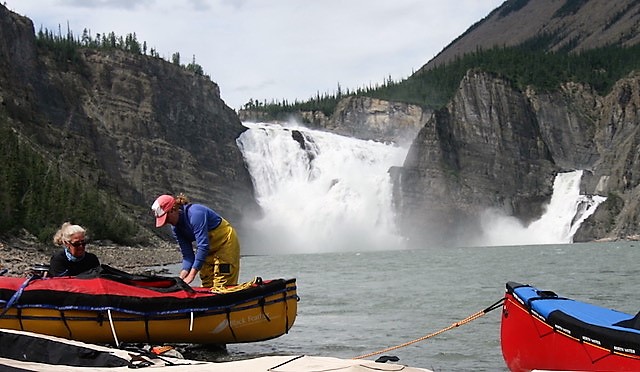 The RCABC Canoe Guide Program provides a bseline of training and professionalism for canoeists who wish to enter and/or advance in the canoe guiding industry. Expedition Guiding requires a diverse set of skills. Most apply to Day Guiding as well:
The RCABC Canoe Guide Program provides a bseline of training and professionalism for canoeists who wish to enter and/or advance in the canoe guiding industry. Expedition Guiding requires a diverse set of skills. Most apply to Day Guiding as well:
- Paddling skill (tandem or solo)
- Large Variety of Rescue Skills
- Group and Risk Management
- Emergency Planning and First Aid
- Camping and Cooking Skills
- Food Safety & Hygiene
- Gear Mangement
- Service Industry Attitude
- Leave No Trace
- Interpretive and Cultural Skills
